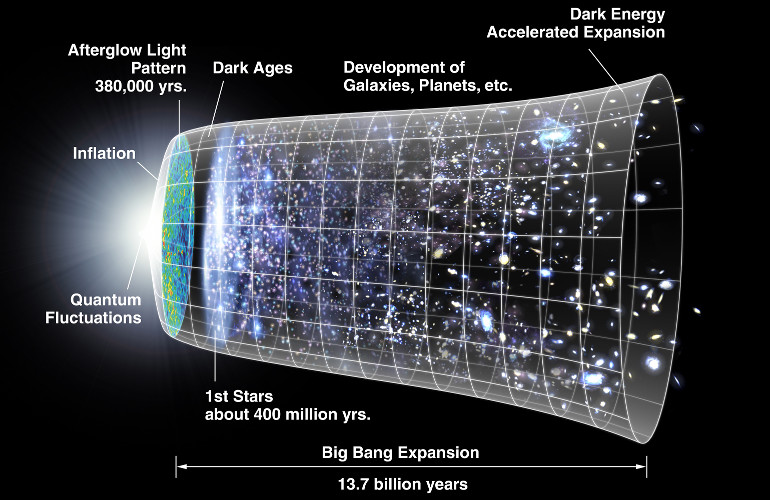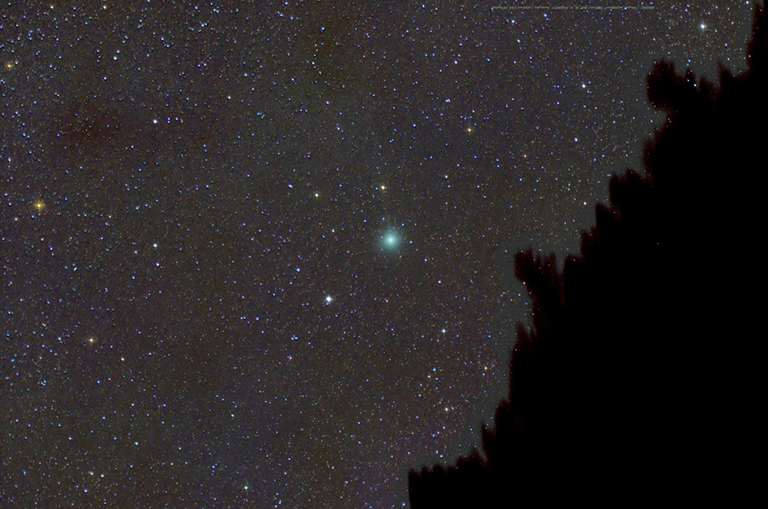
Merging black holes responsible for mysterious flickering quasar

Thirtieth anniversary of Voyager 2’s encounter with Uranus


Hubble looks to the Final Frontier on 50th anniversary of “Star Trek”
The dark matter conspiracy
First detection of element lithium from an exploding star
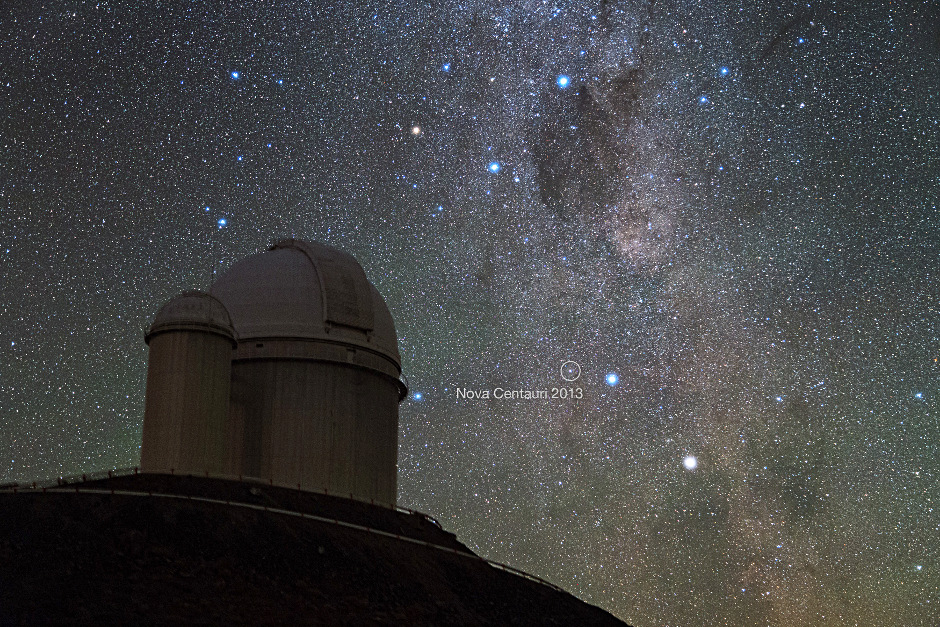

Q Continuum computer simulation models birth of universe
The simulation, run on the Titan supercomputer at DOE’s Oak Ridge National Laboratory, modelled the evolution of the universe from just 50 million years after the Big Bang to the present day — from its earliest infancy to its current adulthood. Over the course of 13.8 billion years, the matter in the universe clumped together to form galaxies, stars, and planets; but we’re not sure precisely how.
This series illustrates the universe's evolution as simulated by the Q Continuum run on the Titan supercomputer, overseen by Argonne physicist Katrin Heitmann. These visuals depict the intricate matter distribution within the simulation. Initially, the matter exhibits uniformity, but as time progresses, gravity influences the dark matter, causing it to aggregate, leading to the formation of galaxies within these clusters. Image credit: Heitmann et. al. Researchers are analyzing vast amounts of data generated by one of the most extensive cosmological simulations ever conducted, led by experts at the U.S. Department of Energy’s (DOE’s) Argonne National Laboratory. Executed on the Titan supercomputer at DOE’s Oak Ridge National Laboratory, the simulation portrays the universe's development from a mere 50 million years post-Big Bang to the present day — from its nascent stages to its current state. Throughout 13.8 billion years, cosmic matter coalesced to give rise to galaxies, stars, and planets; however, the exact mechanisms remain uncertain. These simulations aid scientists in comprehending dark energy, a force influencing the universe's expansion rate, encompassing the distribution of galaxies comprising ordinary matter and enigmatic dark matter, which has eluded direct observation thus far. Extensive sky surveys conducted using advanced telescopes such as the Sloan Digital Sky Survey and the more detailed Dark Energy Survey pinpoint the locations of galaxies and stars at the time of their initial light emission. Additionally, investigations into the Cosmic Microwave Background, residual light from the universe's infancy at 300,000 years old, unveil the universe's initial state — described by Katrin Heitmann, the leading physicist at Argonne, as "initially uniform, with matter clustering over time." The simulation bridges the temporal gap, illustrating the universe's potential evolution: "Gravity influences dark matter, prompting increased aggregation and the eventual formation of galaxies," as stated by Heitmann.

Dark energy explained by relativistic time dilation?

“Special relativity is supposed to be reciprocal, where both parties will experience the same time dilation, but all the examples that we have right now can be interpreted as directional time dilation,” Kipreos said. “If you look at the GPS satellites, the satellite time is slowing down, but according to the GPS satellites, our time is not slowing down — which would occur if it were reciprocal. Instead, our time is going faster relative to the satellites, and we know that because of constant communication with the satellites.”
An alternative theory, the Absolute Lorentz Transformation, explains directional time dilation. Kipreos discovered that this theory aligns with existing evidence when the "preferred reference frame" is tied to centers of gravitational mass. For Earth, this frame would be the "Earth-centered non-rotating inertial reference frame," currently used for GPS satellite time dilation calculations.
Kipreos highlighted that applying the Absolute Lorentz Transformation strictly to cosmological data carries significant implications for the universe and dark energy. As the universe expands, cosmological entities like galaxies move away faster due to Hubble expansion. The theory suggests that higher velocities lead to directional time dilation. Consequently, this theory implies that the present universe experiences time dilation compared to the past, where time moves faster.
Supernovae of equal intensity serve as "standard candles" for measuring cosmological distances based on brightness. However, observations in 1998 and 1999 revealed that distant supernovae appeared dimmer than expected, indicating recent acceleration in the universe's expansion.
Kipreos noted, "The universe's accelerated expansion is often attributed to dark energy, yet its nature and recent emergence remain unclear."
The projected effects of faster time in the past would result in a linear supernova plot at all distances, suggesting no acceleration in the universe's expansion. In this scenario, the presence of dark energy would be unnecessary.
Razor-sharp test images show Euclid’s instruments performing as expected
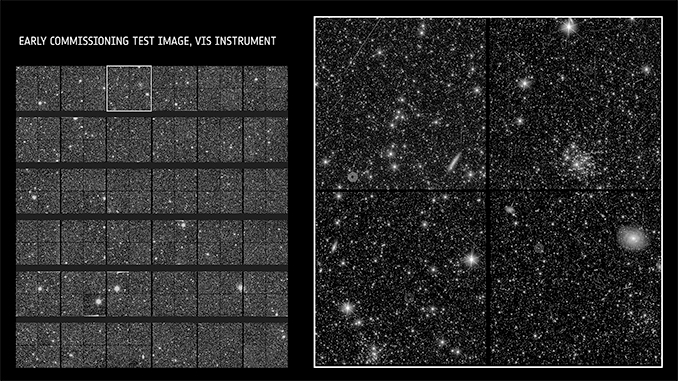
The Euclid space telescope from the European Space Agency, launched on 1 July via a SpaceX Falcon 9 rocket, has arrived at its operational position at Lagrange Point 2, a stable gravitational area 1.5 million kilometers (1 million miles) away from Earth.
Initial test images reveal that the spacecraft's VISual imager (VIS) and Near-infrared Imaging Spectrometer and Photometer (NISP) are functioning well, capturing clear, wide-angle views of numerous stars and galaxies. Though raw images display cosmic ray streaks, these artifacts will be eliminated during the processing of scientific images.
Giuseppe Racca, the project manager, expressed, “After over 11 years of Euclid's design and development, it is both thrilling and deeply emotional to witness these initial images. It's truly remarkable to see just a few galaxies here, captured with minimal system adjustments. Once fully calibrated, Euclid will survey billions of galaxies to construct the most extensive 3D map of the sky ever created.”
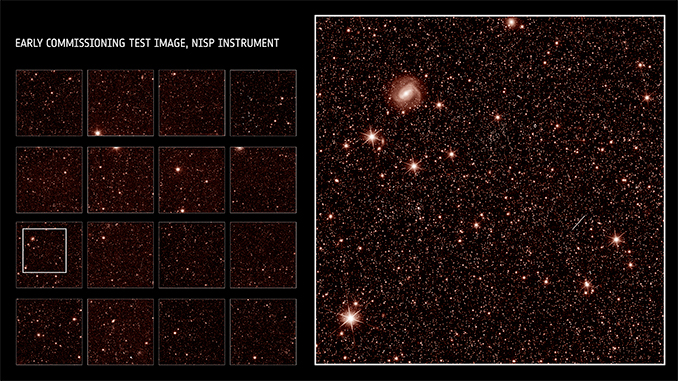
Yannick Mellier, the head of the multi-agency Euclid research consortium, stated, “The remarkable initial images captured by Euclid's visible and near-infrared instruments herald a new era in observational cosmology and statistical astronomy. They signify the commencement of the exploration into the true essence of dark energy, a pursuit led by the Euclid Consortium.”
The $1.5 billion Euclid project represents a pioneering effort to elucidate the characteristics of dark matter, the enigmatic substance permeating the universe, and dark energy, the inexplicable repulsive force propelling the universe's expansion.
Through the analysis of subtle luminosity variations in galaxies spanning the last 10 billion years, Euclid's cameras will aid researchers in determining whether dark energy aligns with a static "cosmological constant" as foreseen by Einstein's theory of general relativity, or if the current understanding of gravity necessitates revision.
Euclid will also delve into the nature of dark matter by scrutinizing the configurations of approximately 1.5 billion galaxies to ascertain how they have been distorted by concealed clouds of dark matter scattered across the expanse between Euclid and its targets.
ESA Director General Josef Aschbacher remarked, “It is truly impressive to witness the rapid success of the latest addition to ESA's scientific missions. I am fully confident that the mission's team will utilize Euclid effectively to unveil substantial insights about the 95 percent of the Universe that remains largely unknown to us.”
New comet predicted to brighten rapidly as it sprints Sunwards
It’s time to hold onto your observing hats once more as a new comet, C/2023 P1 (Nishimura), discovered on 11 August, promises a significant brightening as it hurtles towards the Sun. However, in typical cometary fashion, its behavior is difficult to predict on its first and only visit to the Sun’s harsh environs. There’s a possibility it may disintegrate and fade away.
Currently, Comet C/2023 P1 (Nishimura) can be found in the pre-dawn sky moving northeastward among the stars of Gemini. Observing reports are limited in the initial week or so, but it is shining at approximately magnitude +9.5. Upon discovery, it was reported with a coma of 5 arcminutes in angular size and a tail eight arcminutes long. Nishimura will be closest to Earth, at a distance of around 127.1 million kilometers (0.85 AU), on 13 September, and will reach perihelion on 18 September, when it will be 32.9 million kilometers (0.22 AU) from the Sun.

When to observe the comet
The comet remains visible in the pre-dawn sky until 13 September. A small telescope should easily spot it, provided your observing site has a good horizon to the east-southeast and is not heavily affected by light pollution. The Moon will not interfere until early September.
On 20 August at 4.25am, approximately 90 minutes before sunrise and at the start of nautical twilight from London (with the Sun 12° below the horizon), Comet C/2023 P1 (Nishimura) is positioned about 13° above, around 3° southeast of the magnitude +3.5 star Wasat (delta Geminorum). The comet should be more visible on the pre-dawn of 26 August, aligning nicely with Gemini’s bright stars Castor and Pollux, situated 6.7° below Pollux, the southern twin. It is now a bit higher in the sky, around 4° higher, with the Minor Planet Center anticipating a one-magnitude brightening.
By the end of August, Comet C/2023 P1 (Nishimura) is in Cancer, maintaining its altitude and positioned approximately 4° north-northwest of the Beehive cluster (Messier 44), the prominent open cluster. If it continues to brighten as predicted, the comet will shine at about magnitude +7.5.
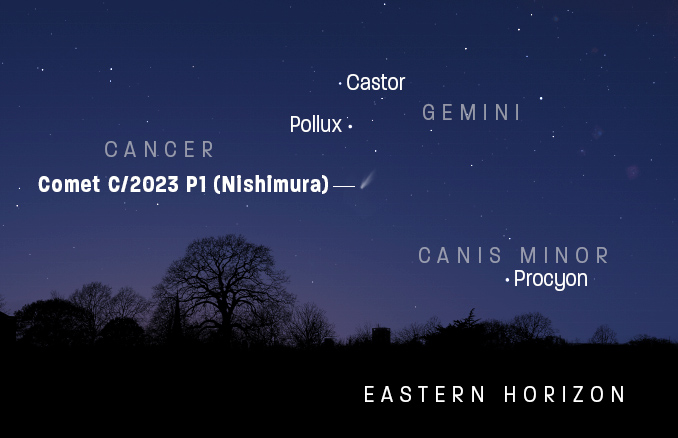
Into September: losing altitude but brightening faster
In early September, Comet C/2023 P1 (Nishimura) begins to descend in altitude as it approaches the Sun, but compensates with an accelerated rate of brightening. It should still be observable through binoculars at this point.
On the morning of 7 September, the comet can be seen in Leo, passing north of magnitude +3 epsilon Leonis while positioned around 13° high in London at 5.05am. A few mornings later, Comet C/2023 P1 (Nishimura) drops below 10° altitude as it starts moving southward, now traversing the sky more than four times faster than during its discovery.
Into the early evening sky
Following its closest approach to Earth on 13 September, Comet C/2023 P1 (Nishimura) transitions to the early-evening sky, with an elongation from the Sun ranging between 12 to 15 degrees. There's a slight opportunity to catch a glimpse of it in strong twilight approximately 40 minutes after sunset from the 13th to the 18th, positioned just about 6° high in the west-northwest. Some estimates place Comet C/2023 P1 (Nishimura) at magnitude +2.8 during this time; even if accurate, it will be challenging to observe.
If it survives its perihelion passage, Comet C/2023 P1 (Nishimura) continues its southward descent for the remainder of the year. Observers in the Southern Hemisphere can witness it under twilit conditions. From Sydney, Australia, the comet appears low in the pre-dawn northeastern sky until around 25 August. After that, it becomes unobservable until late October, when it is low in the pre-dawn sky amidst the stars of Hydra, not far from the globular cluster M68. However, at this point, it shines fainter than magnitude +10.
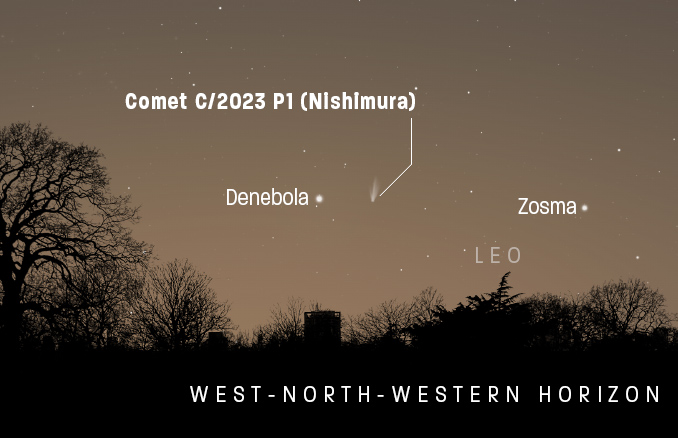 Comet C/2023 P1 (Nishimura) moves into the early evening sky starting on 13 June. It will be quite challenging to observe from UK skies, appearing low in the strong twilight, even though it may brighten to around magnitude +2 at perihelion. This scenario depicts the western-northwestern view from the south of England at 7.50pm BST, approximately 30 minutes after sunset.
Comet C/2023 P1 (Nishimura) moves into the early evening sky starting on 13 June. It will be quite challenging to observe from UK skies, appearing low in the strong twilight, even though it may brighten to around magnitude +2 at perihelion. This scenario depicts the western-northwestern view from the south of England at 7.50pm BST, approximately 30 minutes after sunset.



